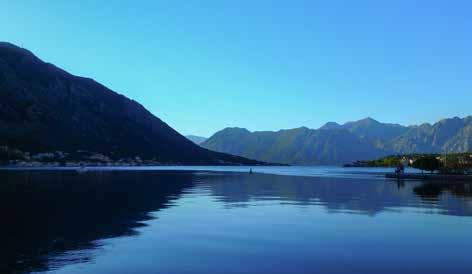Features
Life as A Clinical Radiologist in Rural and Regional Settings: What’s the Reality? An Interview with Dr Stephen Currin, I-MED Radiology Network, Coffs Harbour a good relationship with your referrers provides a sense of purpose and job satisfaction. Work/life balance is easy to achieve and especially beneficial to those of us with young families.
What are the limitations? Challenges?
What are the upsides to practising outside of metropolitan centres? I have found that practising radiology in a regional centre has been rewarding and stimulating. The interesting mix of work and pathology allows you to consolidate radiology foundations from registrar training without being pigeonholed into a specific subspecialty too early in your career. It allows you to develop interests in areas you may not have otherwise considered, allowing you to become a well-rounded general radiologist. That being said, there is also sufficient subspecialty work, if your skills are complementary to those of your colleagues, allowing each other to trade more challenging subspecialty cases. Having recently completed two separate North American fellowships in abdominal imaging and MSK, I have found the volume of subspecialty work in these respective areas more than anticipated. There is a strong link between the public and private sectors in our region, allowing a synergistic relationship that is able to provide a comprehensive service to the community. The sense of belonging to the local community and developing
Regional centre radiology can be limited by the resources available and affordability of certain equipment, which may affect patient access to those services. Likewise, the limited resources available to other specialties may naturally influence the way you practise and report. Also, patients often have a more complex journey to diagnosis, given the large catchment area a regional or rural practice may
have. As a radiologist, if you have particular subspecialty interest, there is the potential to deskill, however this can easily be mitigated with proactive planning such as attending conferences, workshops or organising professional sabbaticals/fellowships.
How have either the pros or the cons shifted during the pandemic? Our regional practice was relatively sheltered from the disruptions posed by the pandemic and remained busy. As with the rest of the country we did experience disruptions to supply chains for items such as barium (not that I’m complaining).
What does the future look like for 2021? And beyond?
“The interesting mix of work and pathology allows you to consolidate radiology foundations from registrar training without being pigeonholed into a specific subspecialty too early in your career. It allows you to develop interests in areas you may not have otherwise considered, allowing you to become a well-rounded general radiologist.”
I hope that much like the exodus of many other professionals from metropolitan areas to regional centres, there may be a similar move for many radiologists in search of a lifestyle change. Regional and rural radiology is an excellent option, especially for recent graduates, as our regional centres grow and become more resourced. Until then, teleradiology and virtual radiology will continue to support regional and rural centres.
What needs to change for patients? Keeping up with demand and controlling patient wait lists are a challenge while regional and rural centres continue to grow. Medical imaging is often central to a patient’s medical journey from diagnosis to their management and follow-up and a vital medical service that needs to be prioritised as such in the regional and rural setting. continued over... Volume 17 No 2 I March 2021
17










